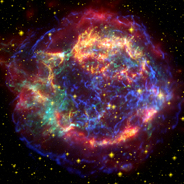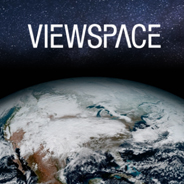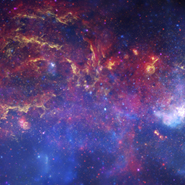Shedding Light on the Universe: The Euclid Space Telescope
Video Player
Video Versions
Learn how the Euclid Space Telescope will help uncover the mysterious effects of dark energy and dark matter on the universe’s structure.
Produced by the Space Telescope Science Institute’s Office of Public Outreach in collaboration with NASA’s Universe of Learning partners: Caltech/IPAC, Center for Astrophysics | Harvard & Smithsonian, and NASA Jet Propulsion Laboratory.
Video imagery:
- Video of the night sky: Z. Levay (STScI)
- Image of the Euclid Space Telescope in a clean room: Thales Alenia Space
- Animation of the Euclid Space Telescope traveling in space: ESA
- Animation of the Euclid Space Telescope observing the sky: ESA, ATG
- Visualization of the Cosmic Web: NASA/NCSA University of Illinois, F. Summers (STScI), M. White, and L. Hernquist (Harvard University)
- Visualization of the CANDELS Ultra Deep Survey Field: NASA, ESA, F. Summers, J. DePasquale, G. Bacon, Z. Levay (STScI)
- Image of the Nancy Grace Roman and the Euclid Space Telescopes: NASA’s Goddard Space Flight Center, ESA/ATG medialab
- Animation of the Nancy Grace Roman Space Telescope: NASA's Goddard Space Flight Center
- Image of the Very Large Telescope (VLT) Paranal Observatory: P. Horálek, ESO
- Collage of a variety of space objects: STScI
Music from Music for Non-Profits
(SPEECH)
[AMBIENT MUSIC]
(DESCRIPTION)
White text appears on black, Where do we fit in all this? What is out there?
Spiral galaxies appear on a dark spacescape.
Text, How does the universe work?
A dense starfield appears in the night sky above red canyon rocks. Stars shoot through the sky.
Text, Some of the biggest questions within astronomy pertain to dark matter and dark energy. While dark matter helps keep the universe together, dark energy is spurring the universe's expansion, and at an increased pace.
But how these two concepts have influenced the structure of the universe is still poorly known.
An image depicts the Euclid Space Telescope in Cannes, France. A tall white metal structure appears in a warehouse with gold and silver colored foil on one side.
Text, Astronomers will find answers to some of these daunting questions with the European Space Agency's Euclid mission. Over 20 countries and more than 300 institutions, along with NASA, have contributed to this European-led mission.
On July 1, 2023, the spacecraft launched from Cape Canaveral, Florida, on a SpaceX Falcon 9 rocket.
A Euclid Space Telescope animation shows the structure orbiting Earth. A portion of the globe appears beneath it with a blue ocean and streaks of white clouds.
Text, To make its long, approximately 1.5 million-kilometer (1 million-mile) journey.
Over six years, Euclid will survey billions of galaxies in the visible and infrared wavelengths to build a rich catalog of galaxies' properties.
The telescope appears before a dark stretch of space and stars. It scans vertically and grid boxes appear at the end of a line of sight. It wavers up and down to the left and the grid expands.
Text, And peer back in history to the time when dark energy became a dominant driver in the universe's expansion. Studying the distribution of galaxies will help shed light on the cosmic web, the invisible structure of the universe that dark matter plays a major part in forming.
A dense cosmic web appears as purple stars and dark patches. Text, Cosmic Web Visualization.
The Euclid space telescope will also study the effects of dark energy on the expansion of the universe.
The fine details of the measured rate of expansion may support or call into question various hypotheses for the nature of dark energy.
The cosmic web streams by us and a dark black spacescape appears dappled with stars. Text, CANDELS Ultra Deep Survey Field Visualization.
Euclid won't be alone in collecting scientific evidence.
A collaborative aspect is intentionally embedded in the mission's design.
The white telescope appears beside a gray telescope with a white light between them.
Text, Other observations, like NASA's Nancy Grace Roman Space Telescope, will complement Euclid's work and follow up with higher-resolution observations.
Support from Euclid and other telescopes, both on the ground and in space, will help shape the direction of future observations and accelerate our scientific discoveries.
A ground-based telescope appears under a night sky filled with bright stars. Text, Very Large Telescope, VLT, Paranal Observatory.
Text, Collectively, they will piece together long-enduring astronomical puzzles, from exoplanets to how galaxies develop over billions of years.
Various images appear of astral bodies, red stars, planets, and spiral galaxies.
Text, There is still much we don't know about the universe. Euclid will be a vital part in reading a chapter of the universe's story that we aren't as familiar with by surveying billions of galaxies to help uncover the ultimate structure of the universe.


